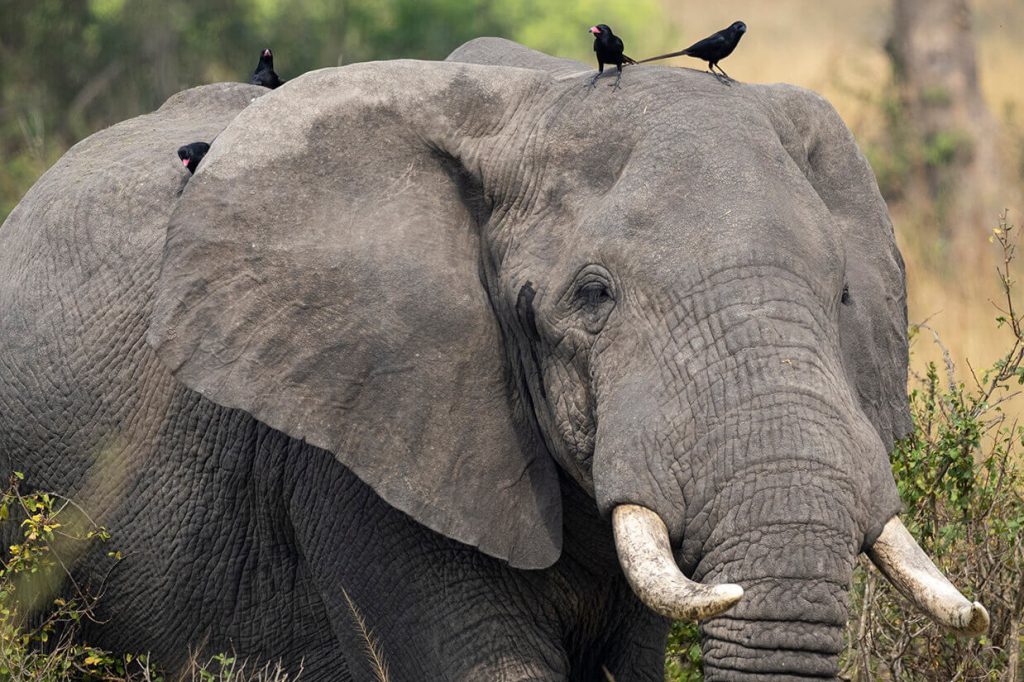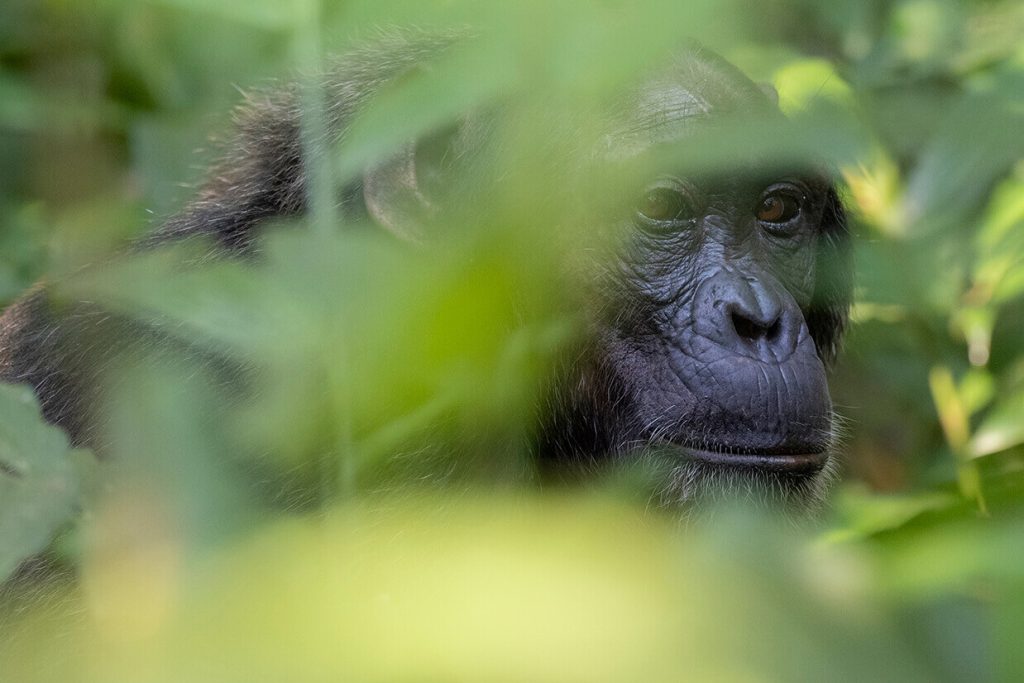Seeing rhinos in the wild in Uganda is not possible. Unfortunately, rhinos became extinct in the country in 1983. The reason: human activity. The rising demand in the black market for rhino horn, combined with the civil war that was affecting Uganda, led to the poaching of the last remaining individuals of these fascinating animals during the 1980s.
With the creation of the Uganda Wildlife Authority (UWA) in 1996, a program was launched to reintroduce rhinos to Uganda. Specifically, the Ziwa Rhino Sanctuary was established—a 70 square kilometer area where the first rhinos arriving in the country would live in semi-wild conditions.
Eight southern white rhinos were brought to Ziwa Rhino Sanctuary, coming from various zoos around the world and reserves in Kenya. Since then, their population has grown to 36 individuals. Once they reach 50, a reintroduction program will begin in Murchison Falls National Park, where around 15 rhinos will be released into the wild.
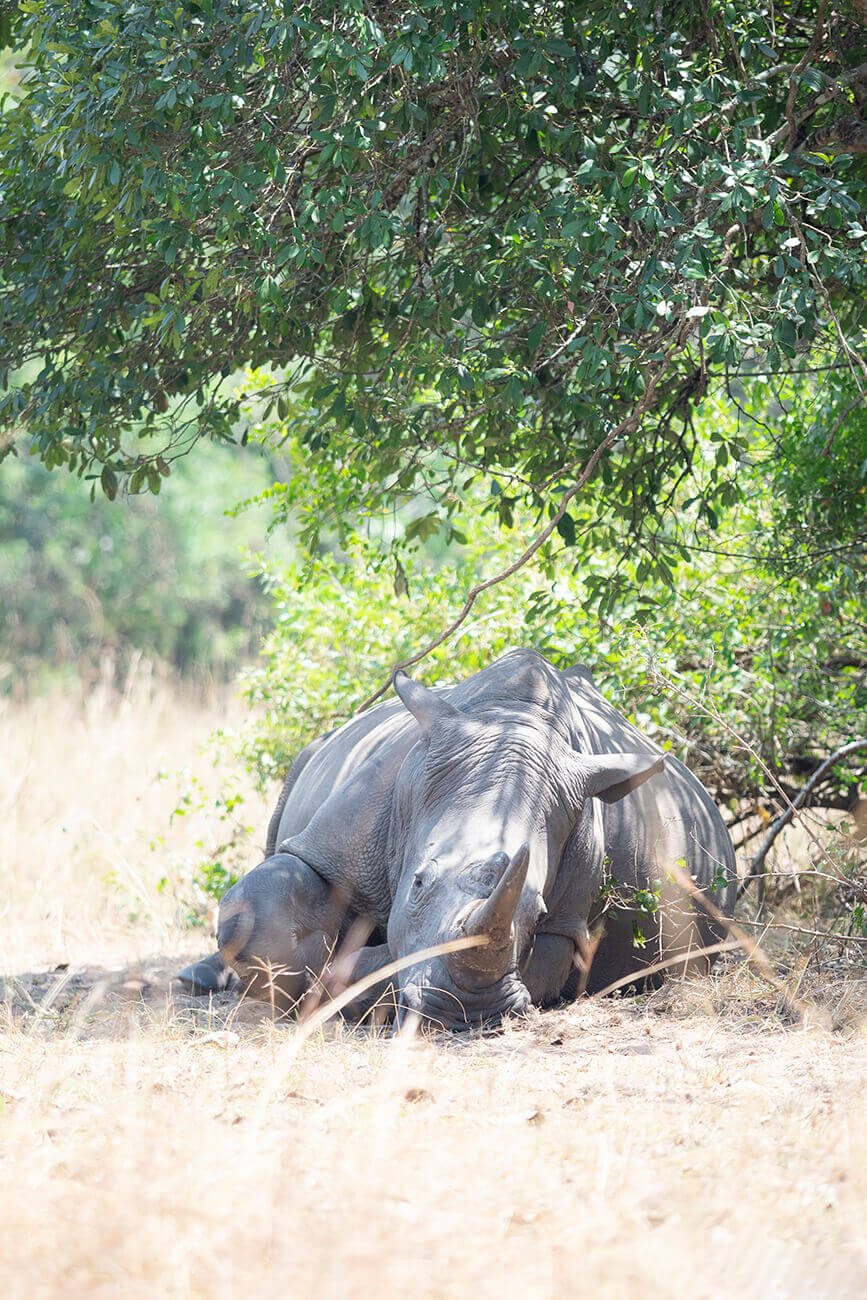
How to Get to Ziwa Rhino Sanctuary
This sanctuary is located about four hours by car from Entebbe, the town where Uganda’s international airport is located. To get there, having your own vehicle is essential. However, it is also possible to book one-day tours to visit the sanctuary.
It is quite common to stop at Ziwa Rhino Sanctuary on the way to Murchison Falls National Park.
What Is the Cost to Visit Ziwa Rhino Sanctuary?
You can check the current entrance fees and activity prices on the official website, in case there have been any changes.
When I visited Ziwa Rhino Sanctuary, the entrance fee to the sanctuary was $20. In addition to the entrance fee, you also had to pay separately for the activities:
- $30 for the rhino tracking (the main activity)
- $25 for a canoe excursion to try to spot the shoebill
- $20 to participate in a nature walk
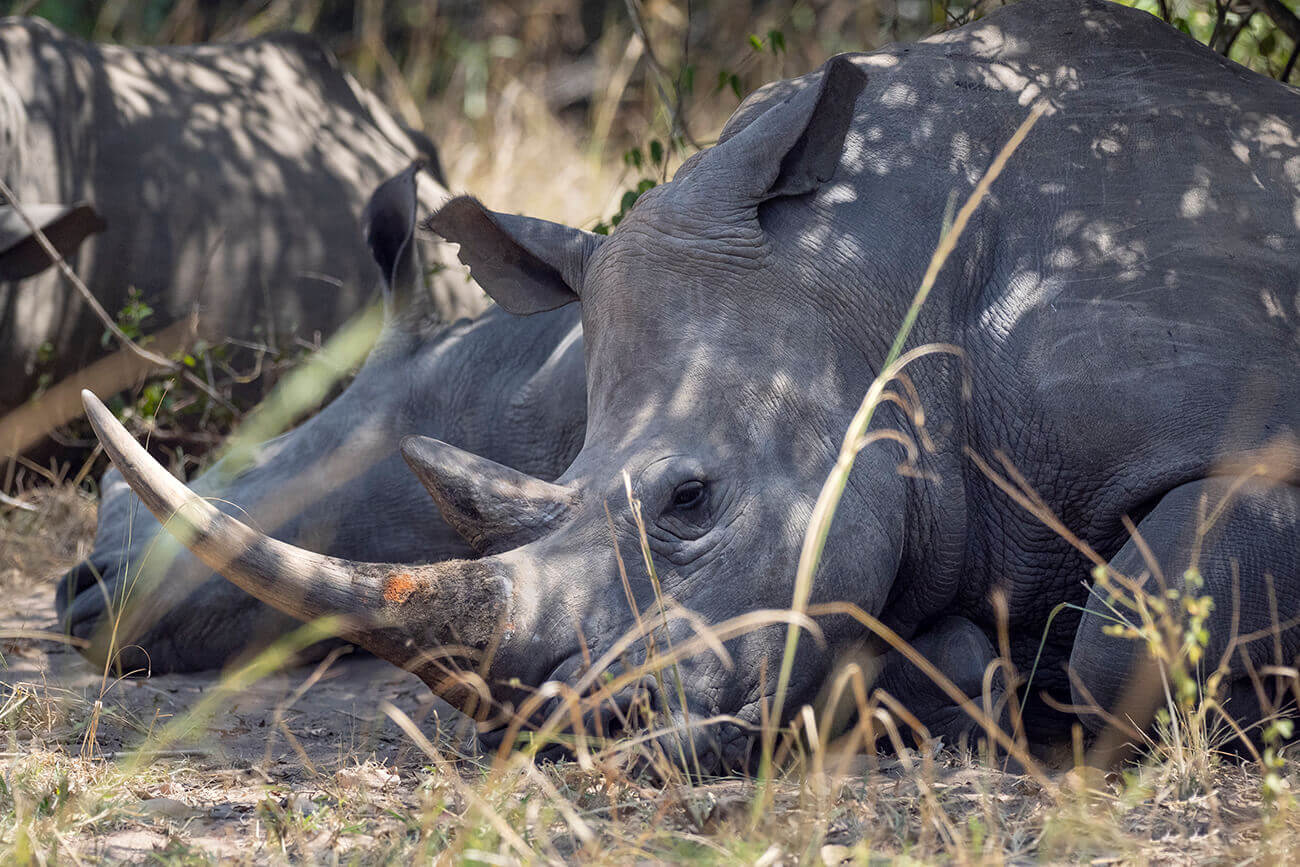
What Is Rhino Tracking Like?
The most popular activity at Ziwa Rhino Sanctuary is the safari to see some of the rhinos that live within the sanctuary’s 70 square kilometers. Spotting them is almost guaranteed. These rhinos are monitored 24 hours a day by around 80 park rangers.
What makes this experience truly special is that the approach to the rhinos is done on foot, accompanied by one of the sanctuary’s guides. Specifically, visitors are first driven to the area where the rhinos are located at the time of the visit. From there, the group walks to the exact location and is allowed to get as close as 6 or 7 meters from the animals.
White rhinos (unlike black rhinos) are very peaceful, so there is no danger in doing this activity.
The duration of the rhino tracking is flexible but generally lasts between 30 minutes and two hours, depending on where the rhinos are located within Ziwa Rhino Sanctuary.
💡 Get a Free Quote for Your Trip to Uganda with Trusted Local Operators
If you’d like to plan your trip to Uganda with reliable local tour operators, I can help you connect with the best ones. Just fill out this quick form, and based on the type of safari you’re looking for, I’ll match you with the most suitable local agencies. I’ll also be available to answer any questions throughout the planning process — so your safari will be stress-free, authentic, and truly unforgettable!
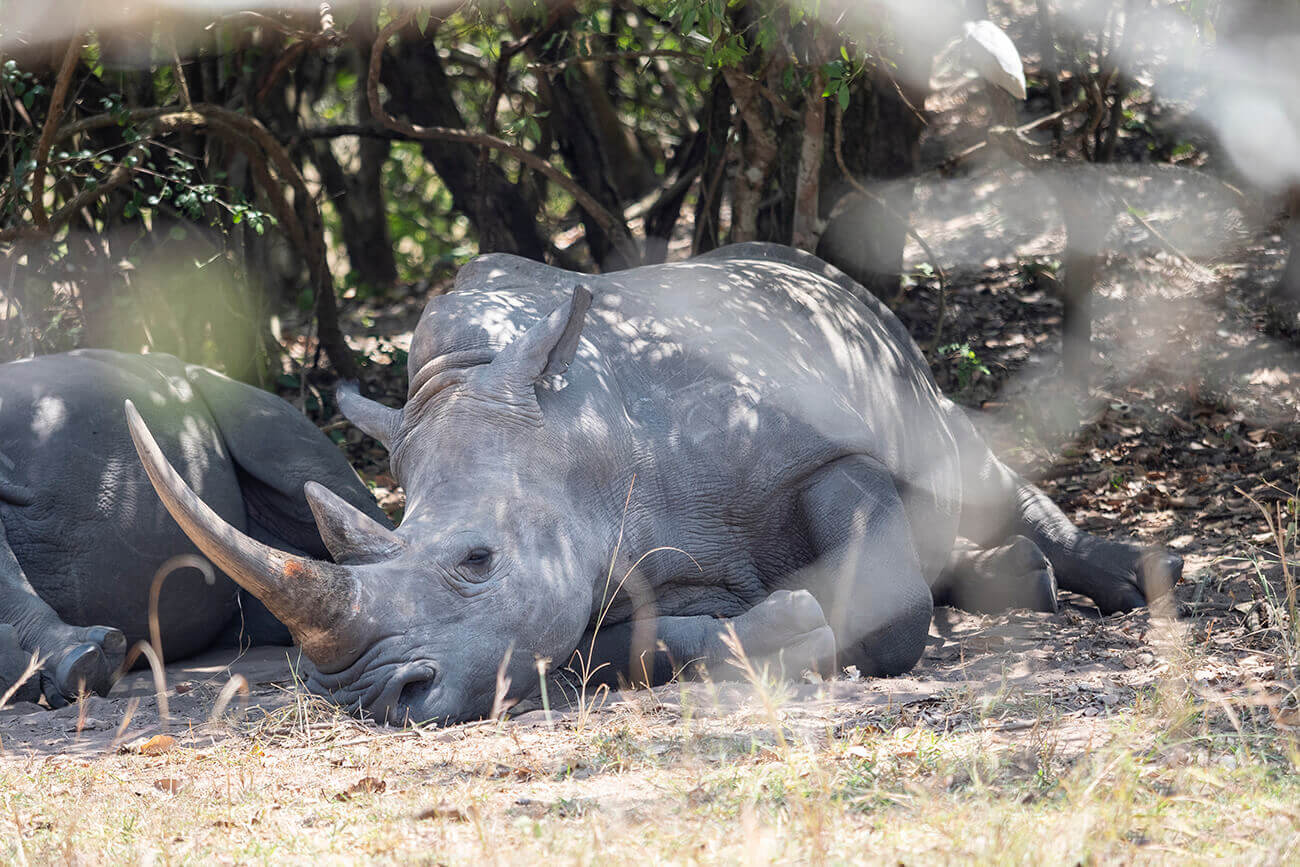
When Is the Best Time to Visit the Sanctuary?
Rhinos can be seen during any month of the year, so visiting Ziwa Rhino Sanctuary is always a great option.
Most travelers visit the sanctuary during the dry season, as this is when the majority of trips to Uganda take place. However, it’s important to note that white rhinos do not have sweat glands. This means that during the hottest months—when it doesn’t rain—they tend to spend much of the day resting in the shade of the trees.
During the rainy months (from September to December and from March to May), the landscapes of Ziwa Rhino Sanctuary turn a vibrant green. Additionally, rhinos tend to be much more active throughout the day. This makes it a very good time to visit the sanctuary.
What Is the Best Time of Day to Visit Ziwa Rhino Sanctuary?
To increase your chances of seeing the rhinos active and standing, the best times are early in the morning and late in the afternoon. These are the coolest parts of the day, which helps encourage the rhinos to move around.
Rhino tracking excursions at Ziwa Rhino Sanctuary begin at 8:00 AM.
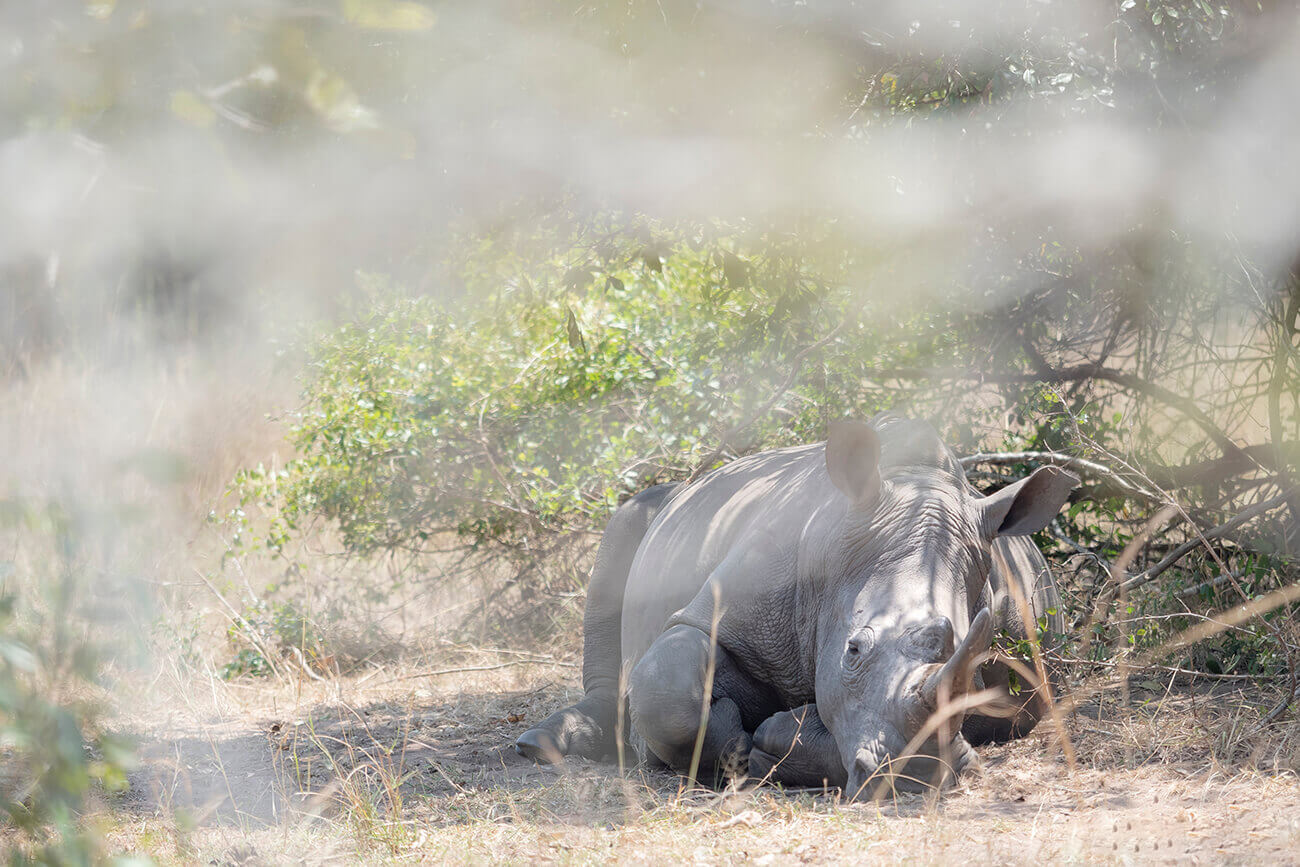
Arriving in Uganda and the Rhinos of Ziwa Rhino Sanctuary: My Experience
ViaVia Entebbe: A Warm Welcome to Uganda
After a long flight from Barcelona, I arrived in Uganda in the late morning. Waiting for me was a guide from a trusted local operator, with whom I would be traveling around Uganda for ten days.
While still at Entebbe Airport, I also took the opportunity to buy a SIM card so I could have internet access during my stay in the country. A SIM with 10 GB of data cost me 50,000 UGS (around €13).
After taking care of those initial tasks, I headed to my accommodation to rest after the long journey. I stayed at ViaVia Entebbe. The most attractive feature of this place is its beautiful gardens. There are two small ponds that attract a wide variety of water birds.
I spent the afternoon there photographing malachite kingfishers, grey herons, striated herons, and many other bird species.
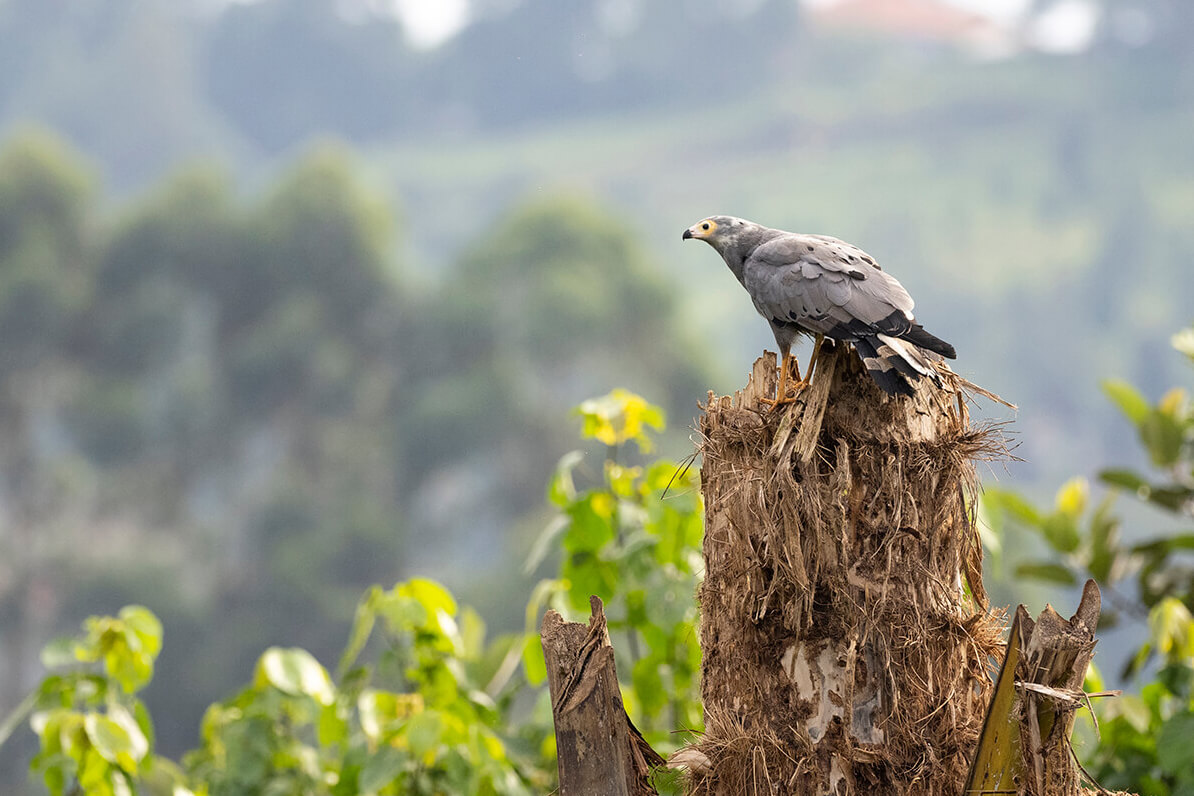
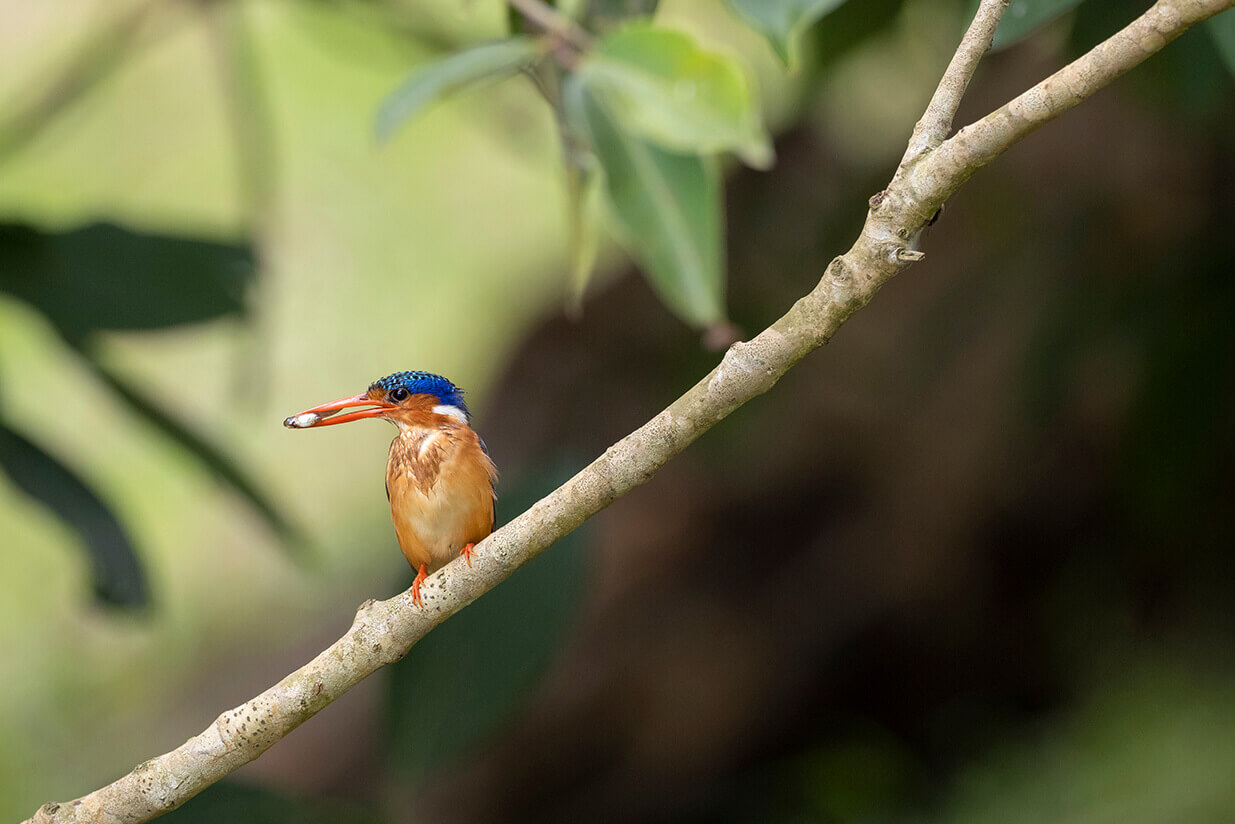
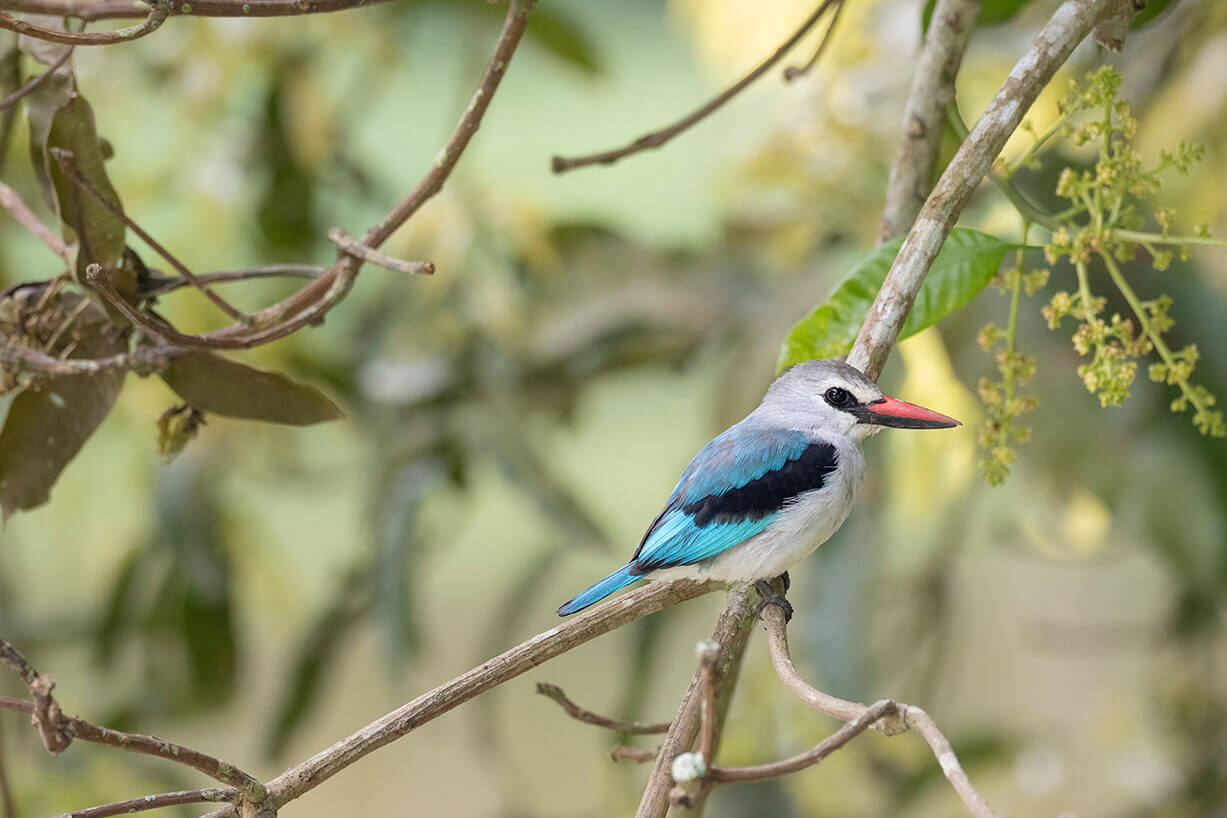
From Entebbe to Ziwa Rhino Sanctuary
The next day, my journey through the country finally began. Around 8:30 AM, I was picked up in Entebbe to head to Ziwa Rhino Sanctuary. The drive takes about four hours, although this can vary depending on the traffic when passing the outskirts of Kampala.
The entire route is on a paved road that is in very good condition.
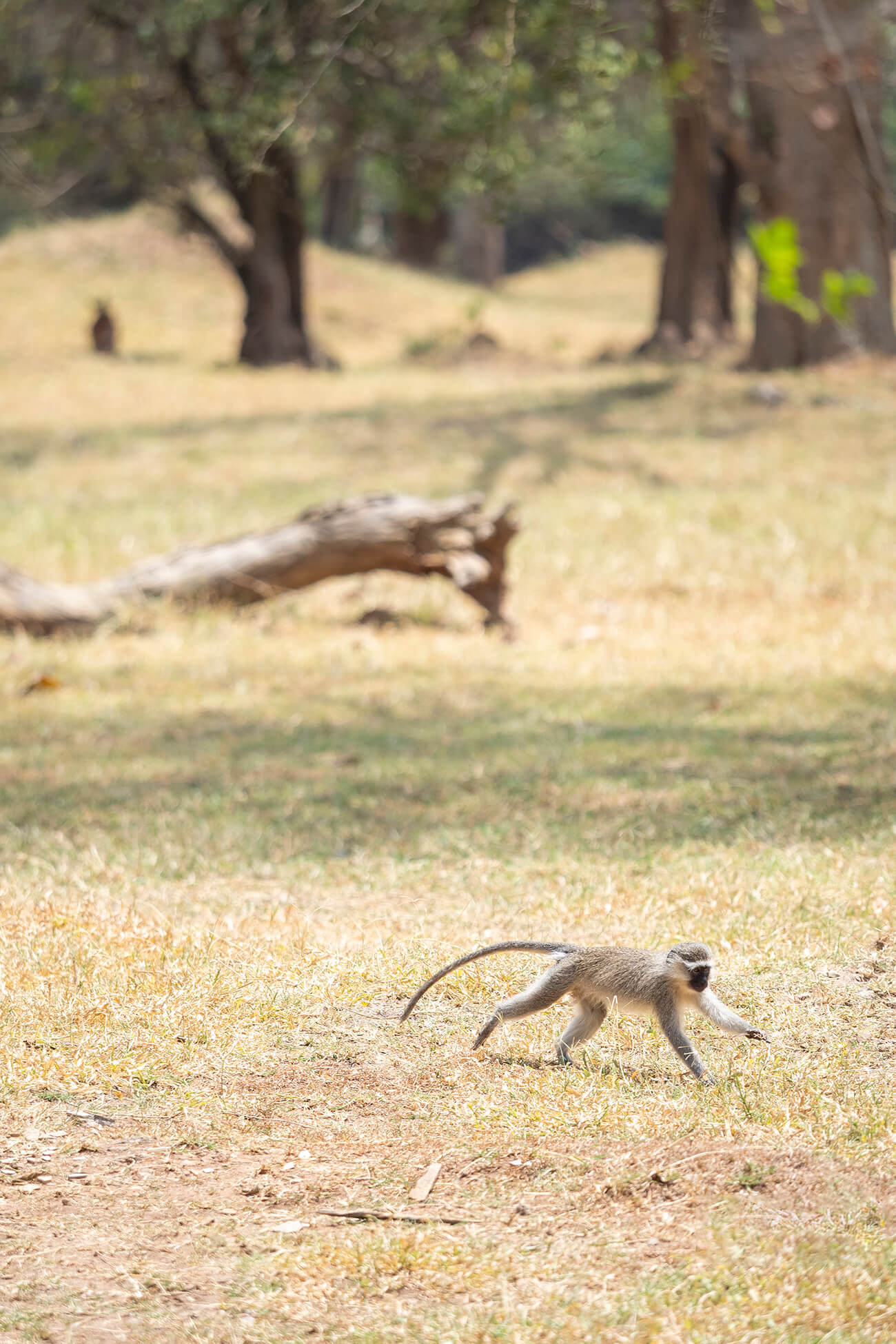
Observing Rhinos in Uganda
I arrived at Ziwa Rhino Sanctuary at the worst possible time—right at midday when it was very hot. However, because of the sanctuary’s remote location, arriving at midday is quite common.
This would be my first wildlife experience on the trip. After a brief introduction about the sanctuary and the rhinos, we drove closer to the area where the rhinos had already been located. They were very close to the park entrance.
Once I got out of the vehicle, it was time to approach on foot, following the instructions of the sanctuary guide who accompanied us. We came across different groups of rhinos, usually consisting of two or three individuals. At all times, the guide made sure that the safety distance from the animals was respected.
In total, I was able to see 14 rhinos, one of which was a calf only a few months old. Since it was very hot, they were all resting in the shade. But the experience was impressive nonetheless. These are huge animals, and seeing them without the protection of a vehicle is very special.
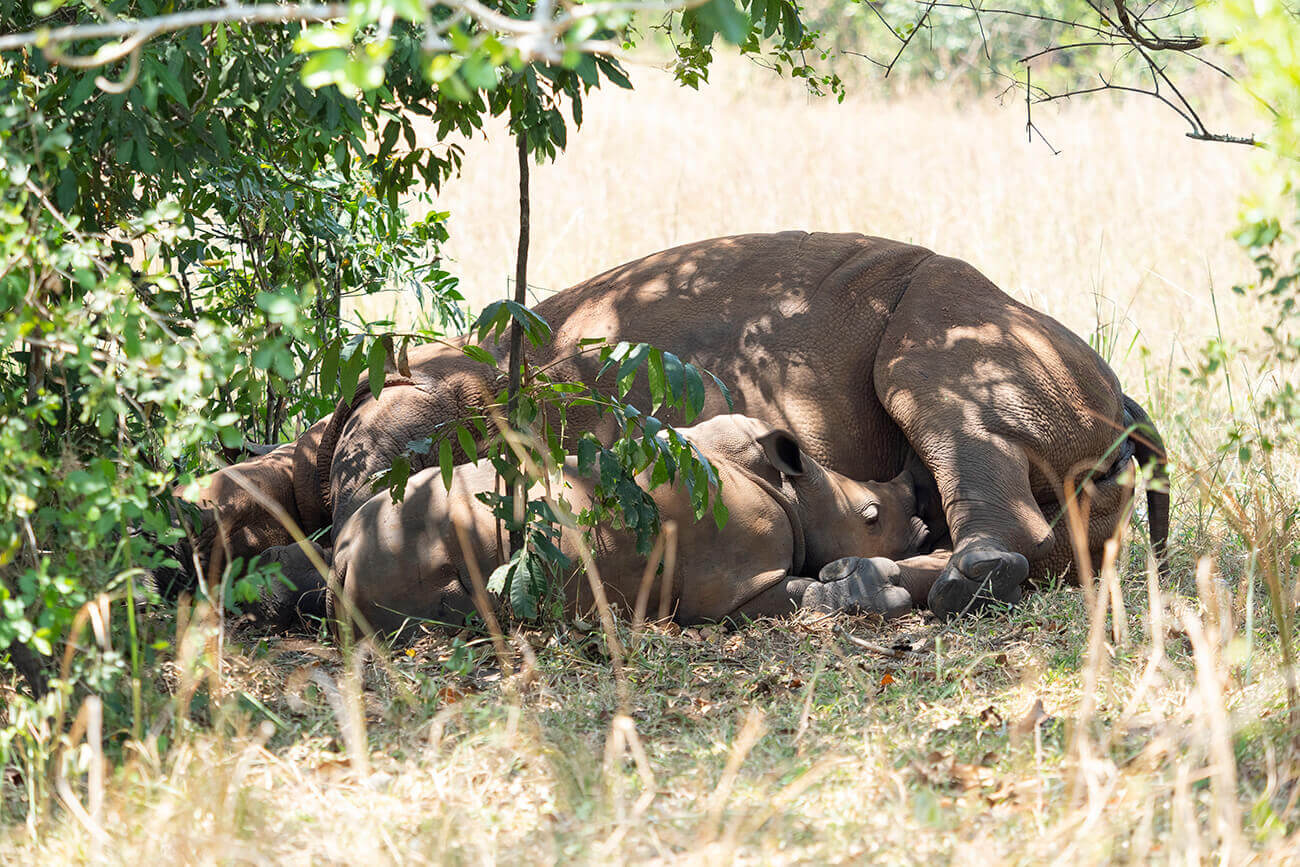
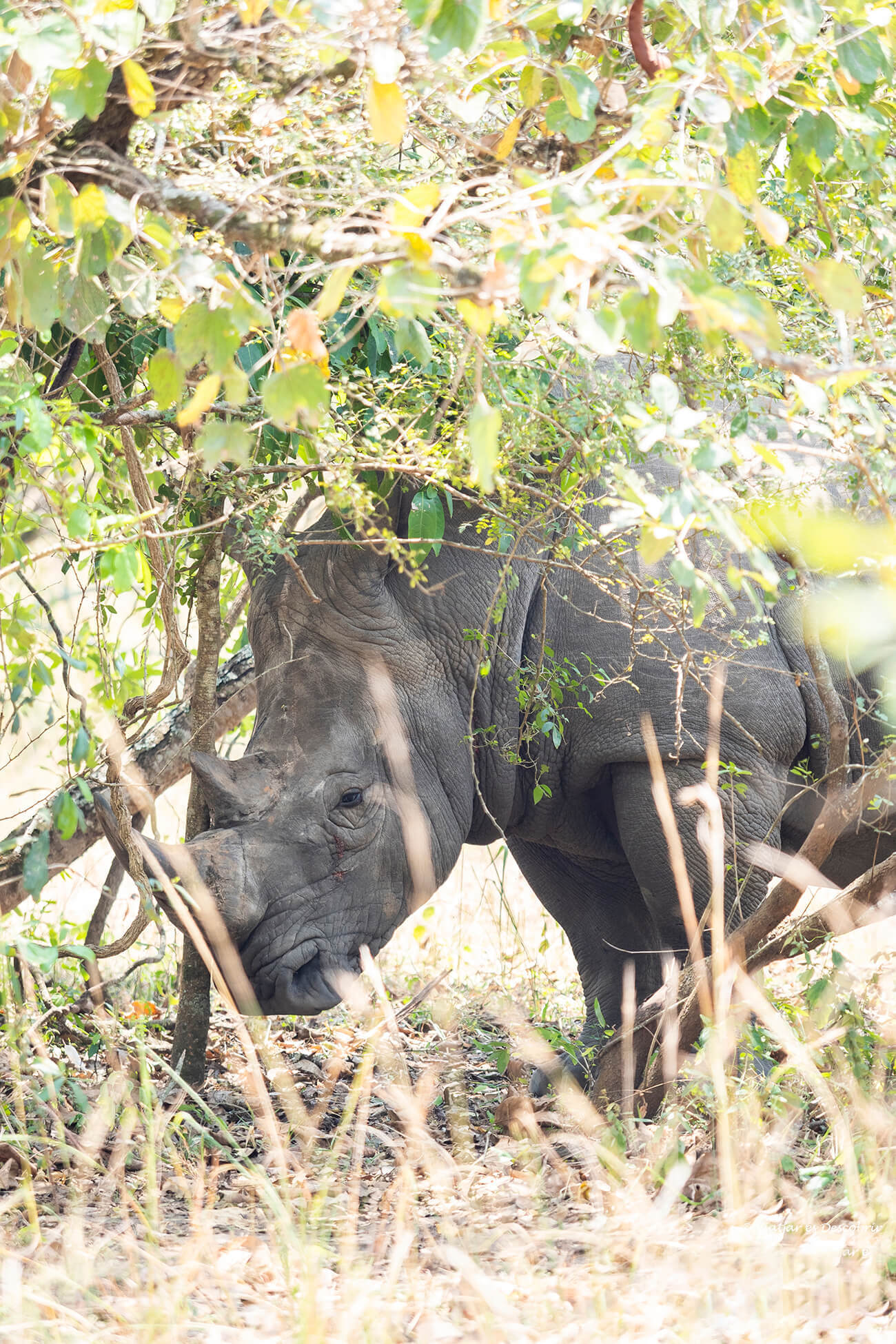
Afterwards, I went to have lunch at the restaurant inside the sanctuary. It’s a great way to continue supporting this project and to see some more animals. While eating, I was able to spot some baboons, Uganda kobs, and vervet monkeys.
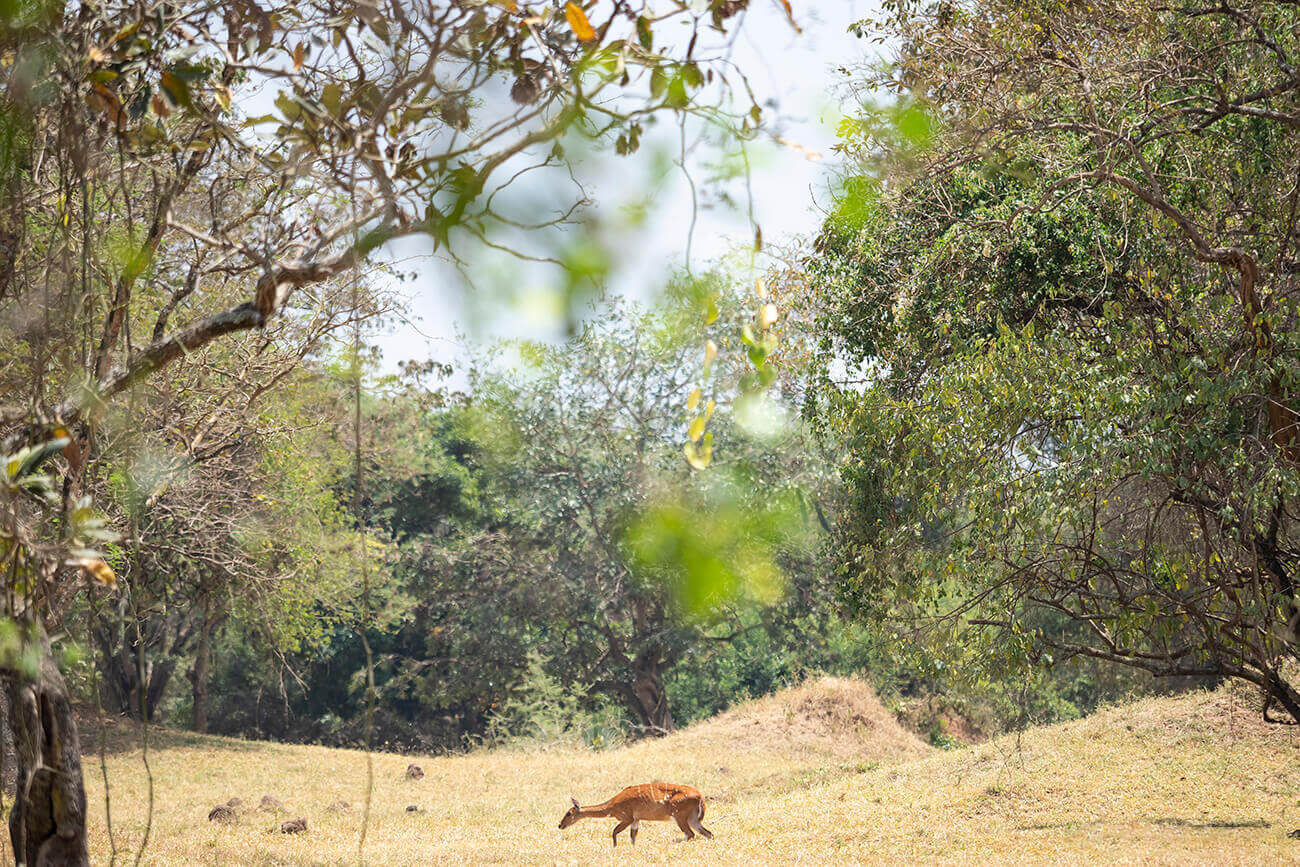
From Ziwa Rhino Sanctuary to Murchison Falls National Park
I ended the second day of the trip with a three-hour drive to the northern area of Murchison Falls National Park.
To get there, it’s worth entering through the park’s southern gate, Kichubanyobo Gate. From this gate, you can drive along a paved track that crosses the interior of the park. The speed limit is 40 km/h.
The drive through the national park gave me a clear view of its diverse ecosystems. Gradually, the trees of Budongo Forest gave way to the open plains of the savannah. During the last few kilometers inside the park, I started spotting mammals. In the distance, there were giraffes and herds of elephants, and closer by I saw buffaloes, Uganda kobs, waterbucks, and various antelopes.
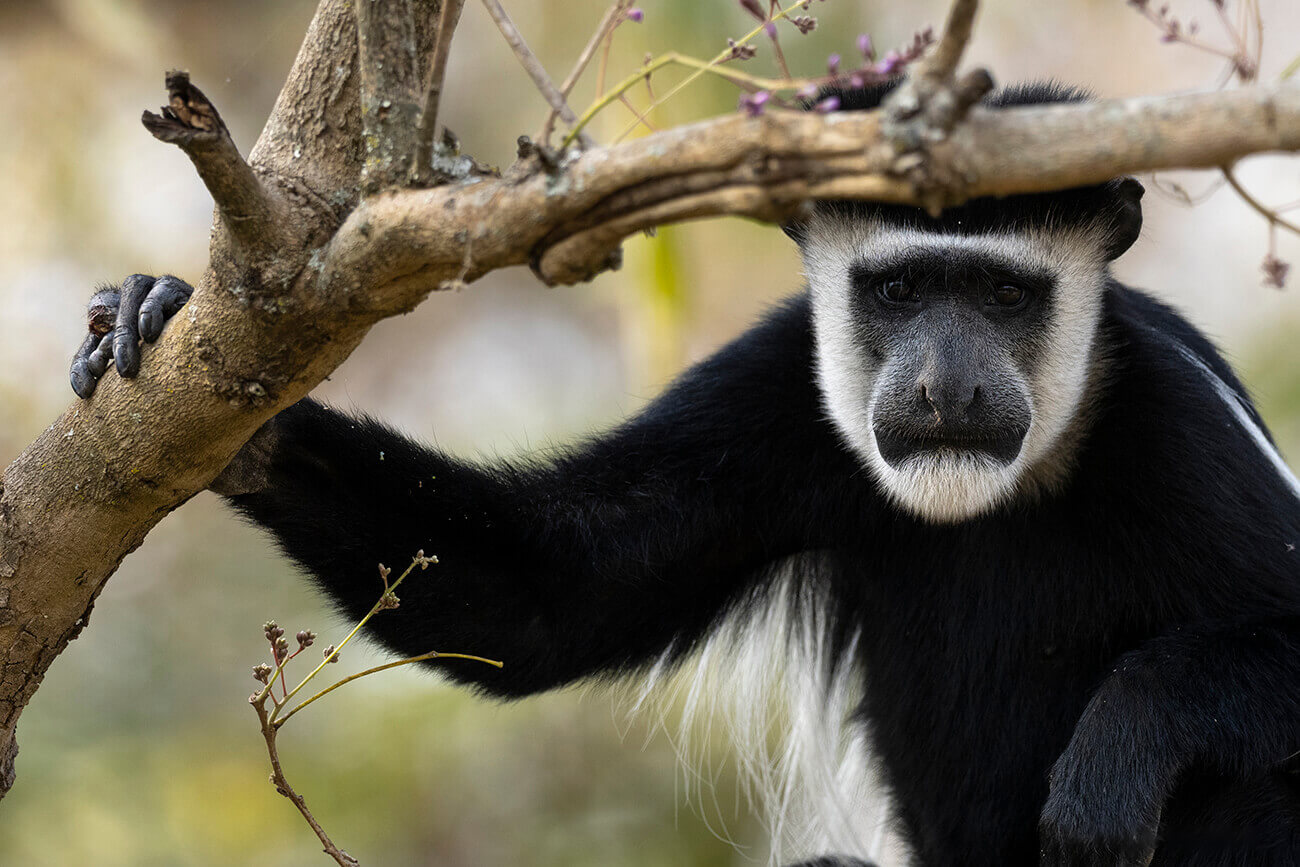
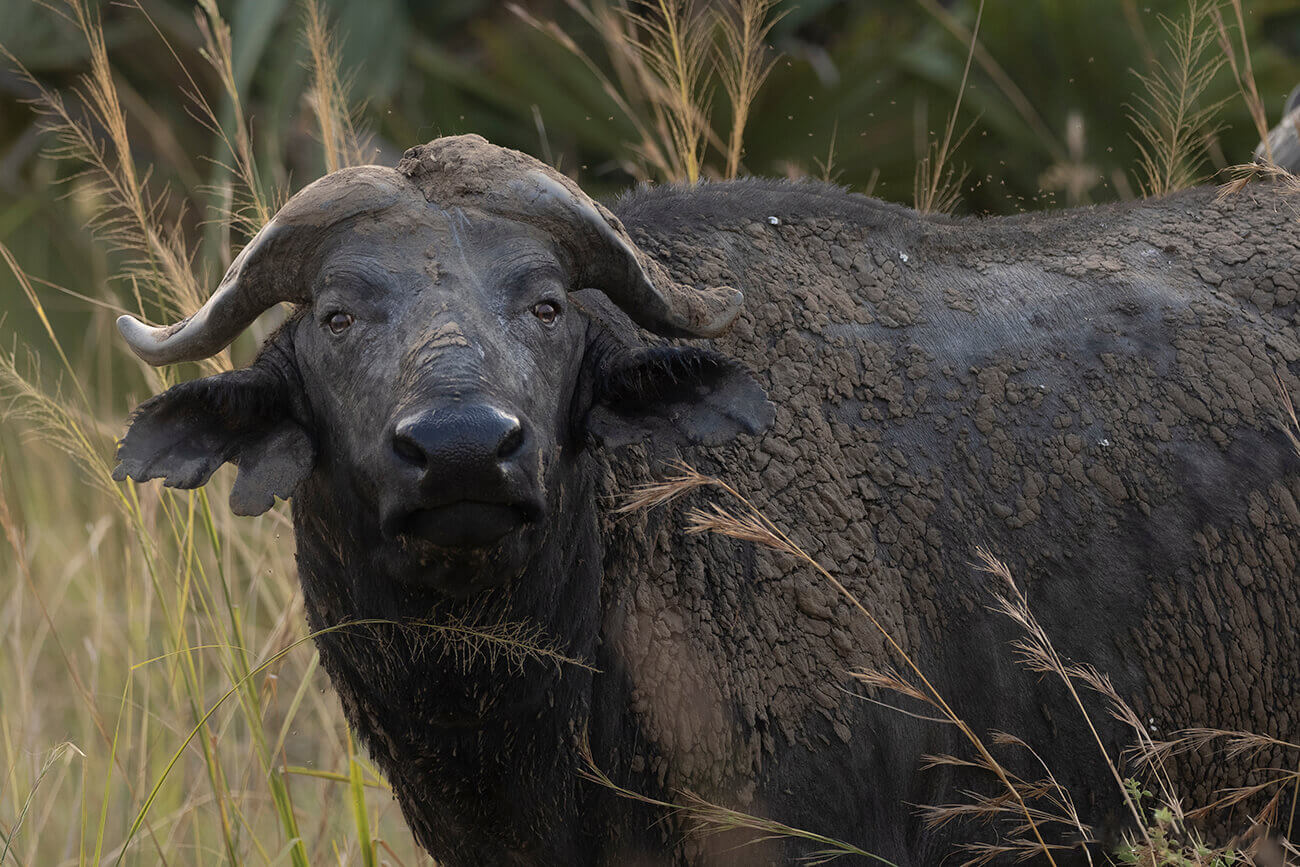
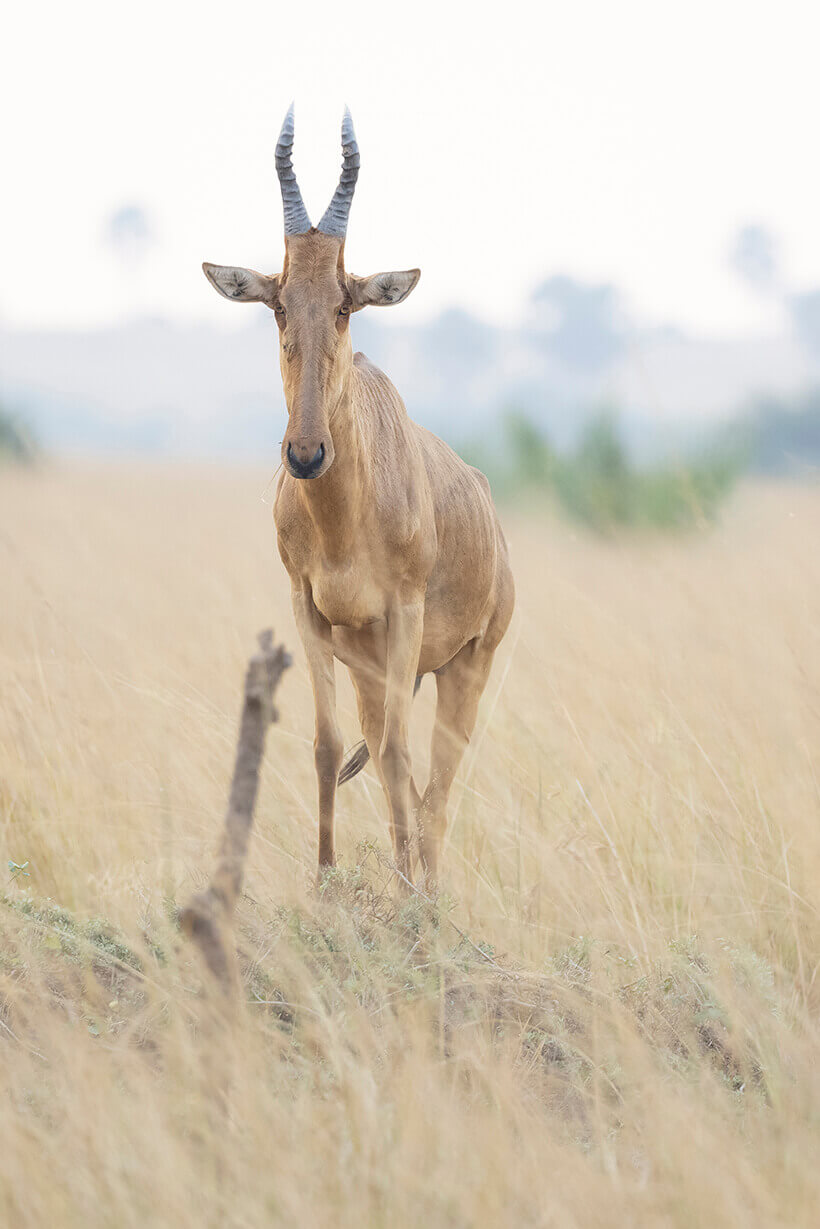
To top it all off, just before leaving the park, there was a large herd of elephants right next to the road. I was so excited to reunite with these magnificent mammals!
As dusk was falling, I arrived at the accommodation where I would spend the next two nights: Tilenga Safari Lodge, located very close to the park’s northern entrance gate.
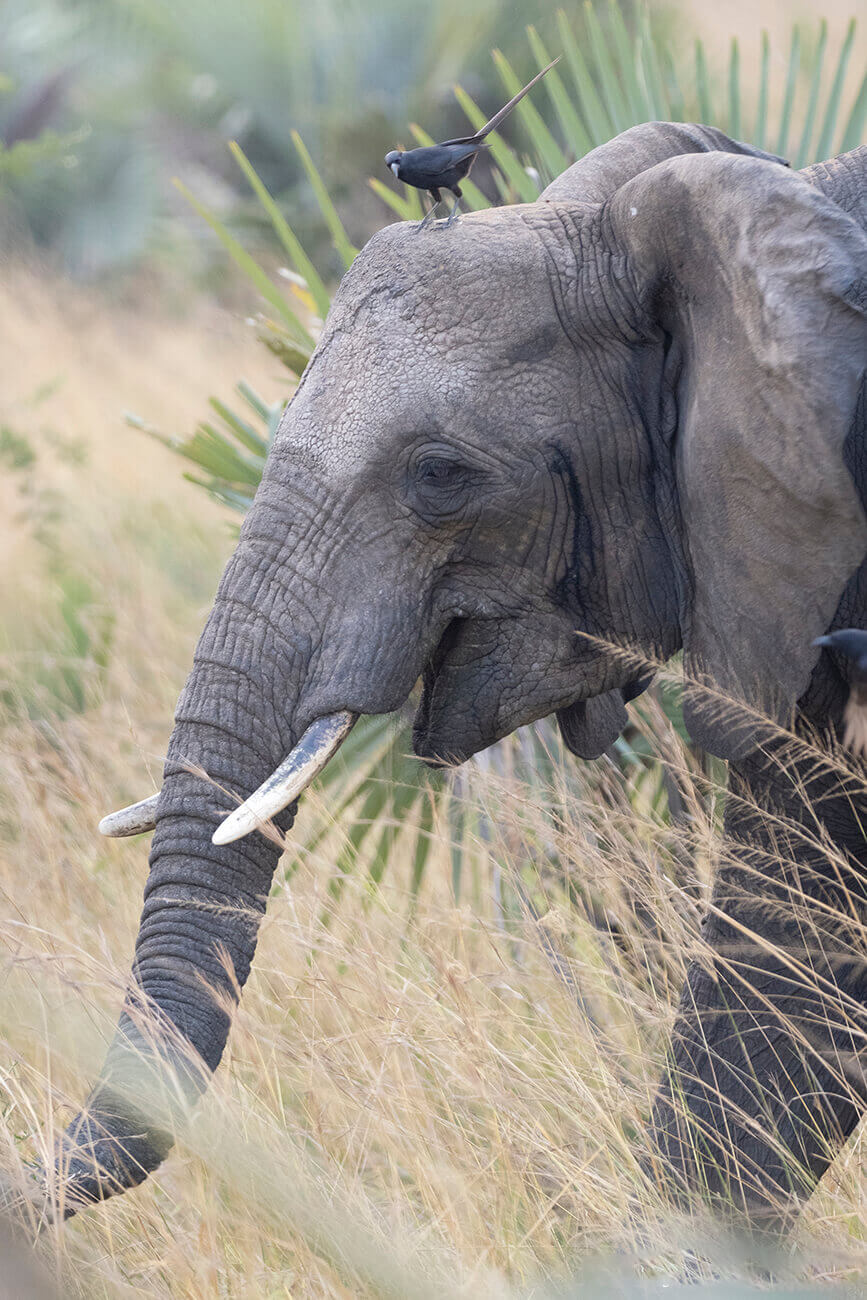
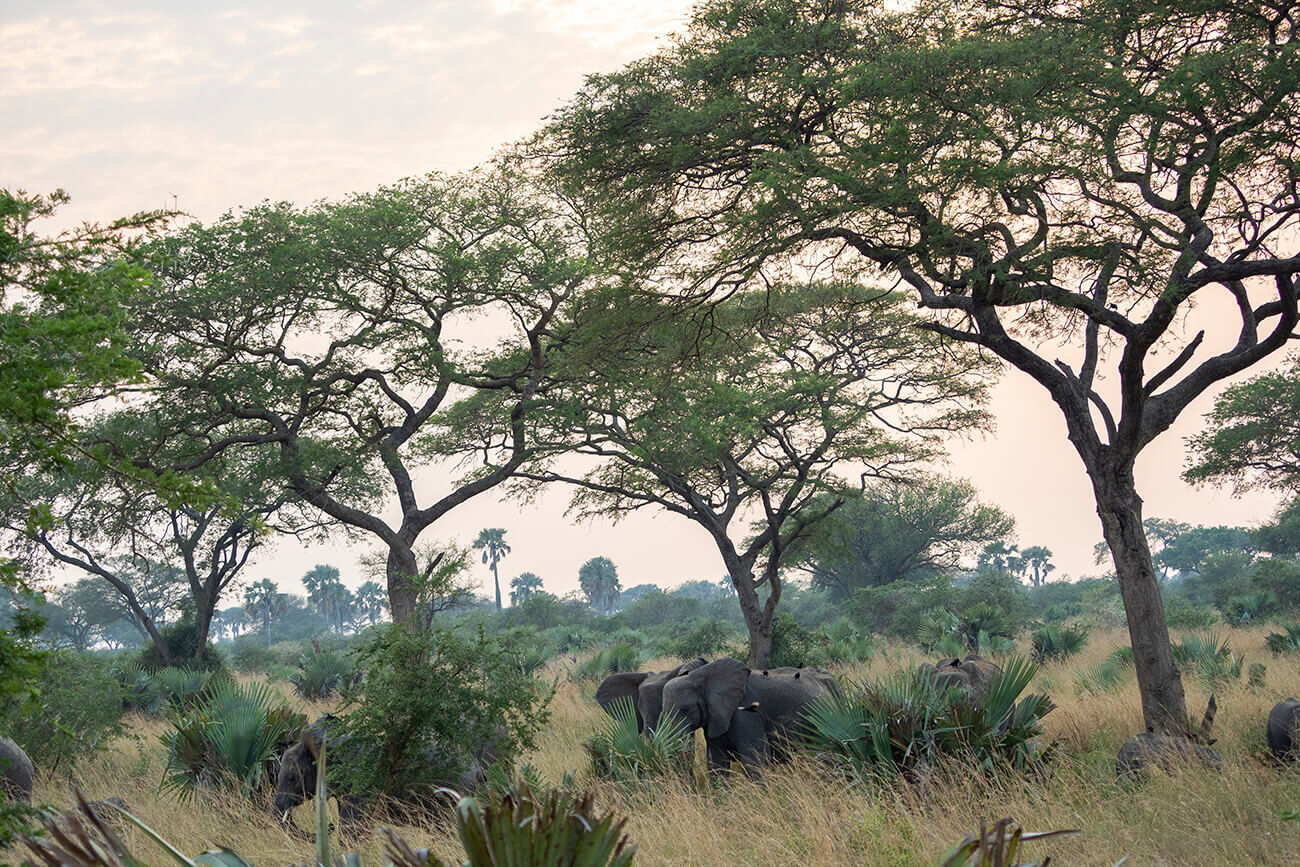
Plan Your Trip to Uganda
🦍 Find the best trips and safaris to Uganda with a local operator here.
✈️ The best flight deals to Uganda here.
🏨 The best prices for accommodations in Uganda here.
🚑 Get your travel insurance with a 7% discount here.
💳 The best card for paying (without fees) and withdrawing money abroad here.


